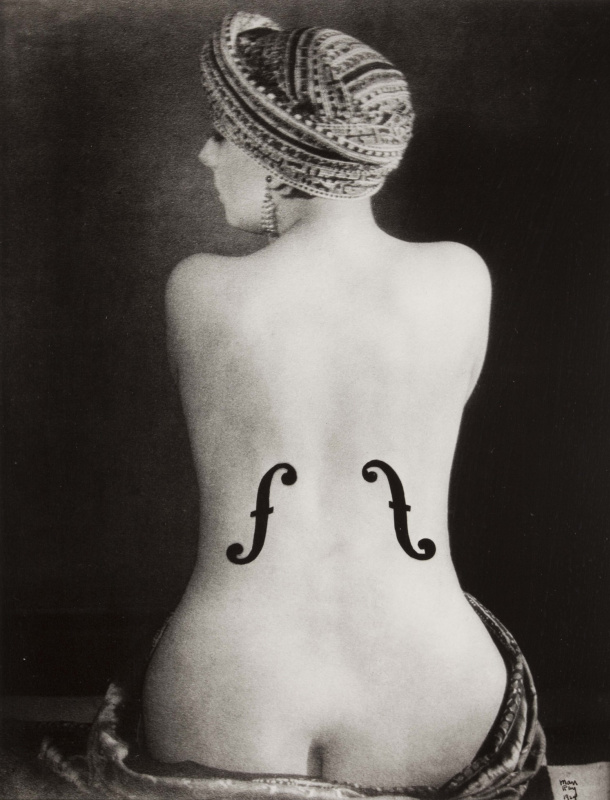log in
Enter site
Login to use Arthive functionality to the maximum
Dadaism (Dada)
45 artworks, 19 artists
Dada, or Dadaism, is an avant-garde art movement. Its centre appeared to be the Swiss Zurich and the famous Cabaret Voltaire. The Dada movement brought together artists, poets, writers and other arts people who expressed dissatisfaction with the war, violence and nationalism, protested against the logic and aesthetics of modern capitalist society. Dada embodied irony, cynicism, ridicule and irrationality. They had neither canons, nor standards. The proponents of the trend argued: “Dadaists are nothing, nothing, nothing, no doubt, they will achieve nothing, nothing, nothing.”
As for the movement’s name, here is what one of the founding fathers of Dada, the poet Tristan Tzara wrote: “In the language of the Negro Kroo tribe it means the tail of a sacred cow; in some areas of Italy they call mom like that... It could also be a reproduction of incomprehensible child’s babbling. In any case, it’s something completely meaningless, which has become the most successful name for the whole trend from now on” (1918). The nihilistic conceptualism of the Dadaists implied a search for the role of the artist in society and the possibilities of communication with the audience. The concept of chance played an important role in creating a work of art: the Dadaists protested against the traditional classical art canons.
The works and paintings by Dada artists demonstrated intrigue, absurdity and paradox, giving the viewer freedom of interpretation of what he/she saw. Combining art and everyday life, Dadaists involved the public in the creation of their works, giving rise to the development of pop culture. Artists used a collage technique, they also invented a number of innovative techniques, including ready-made — the use of existing objects or their combination, which were endowed with new meanings, as well as photo montage — combining photographs, drawings and texts in fancy combinations. Dadaism is characterized by a lack of rational control over the process of creating a work of art; randomness and spontaneity were paramount. Humour and irony were part of the ideology of this style, allowing the masters to not take their work too seriously.
After the end of World War I, artists and writers travelled around the world, which helped to spread the Dada principles. Having laid the foundations for the creation and development of surrealism, postmodernism, conceptualism, expressionism, Dadaism became a short-lived (1915-1924), but a crucial point in European culture. In Russia, the followers of Dadaism united themselves into the Nichegoki (Nothingists) literary group (1920—1922).
Famous Dada pictures:
“This is Stieglitz Here” by Francis Picabia, 1915
Untitled (“Random Squares”) by Jean Arp, 1917
“Fountain” by Marcel Duchamp, 1917
“L.H.O.O.Q” by Marcel Duchamp, 1919
“The Chinese Nightingale” by Max Ernst, 1920
Famous Dada artists:
Jean Arp, Marcel Duchamp, Kurt Schwitters, Max Ernst, Marcel Janco, Emil Nolde, Sophie Taeuber-Arp, Man Ray, Francis Picabia, Georg Gross, Beatrice Wood, Robert Rauschenberg, Erwin Blumenfeld.
As for the movement’s name, here is what one of the founding fathers of Dada, the poet Tristan Tzara wrote: “In the language of the Negro Kroo tribe it means the tail of a sacred cow; in some areas of Italy they call mom like that... It could also be a reproduction of incomprehensible child’s babbling. In any case, it’s something completely meaningless, which has become the most successful name for the whole trend from now on” (1918). The nihilistic conceptualism of the Dadaists implied a search for the role of the artist in society and the possibilities of communication with the audience. The concept of chance played an important role in creating a work of art: the Dadaists protested against the traditional classical art canons.
The works and paintings by Dada artists demonstrated intrigue, absurdity and paradox, giving the viewer freedom of interpretation of what he/she saw. Combining art and everyday life, Dadaists involved the public in the creation of their works, giving rise to the development of pop culture. Artists used a collage technique, they also invented a number of innovative techniques, including ready-made — the use of existing objects or their combination, which were endowed with new meanings, as well as photo montage — combining photographs, drawings and texts in fancy combinations. Dadaism is characterized by a lack of rational control over the process of creating a work of art; randomness and spontaneity were paramount. Humour and irony were part of the ideology of this style, allowing the masters to not take their work too seriously.
After the end of World War I, artists and writers travelled around the world, which helped to spread the Dada principles. Having laid the foundations for the creation and development of surrealism, postmodernism, conceptualism, expressionism, Dadaism became a short-lived (1915-1924), but a crucial point in European culture. In Russia, the followers of Dadaism united themselves into the Nichegoki (Nothingists) literary group (1920—1922).
Famous Dada pictures:
“This is Stieglitz Here” by Francis Picabia, 1915
Untitled (“Random Squares”) by Jean Arp, 1917
“Fountain” by Marcel Duchamp, 1917
“L.H.O.O.Q” by Marcel Duchamp, 1919
“The Chinese Nightingale” by Max Ernst, 1920
Famous Dada artists:
Jean Arp, Marcel Duchamp, Kurt Schwitters, Max Ernst, Marcel Janco, Emil Nolde, Sophie Taeuber-Arp, Man Ray, Francis Picabia, Georg Gross, Beatrice Wood, Robert Rauschenberg, Erwin Blumenfeld.
Read more
Feed

